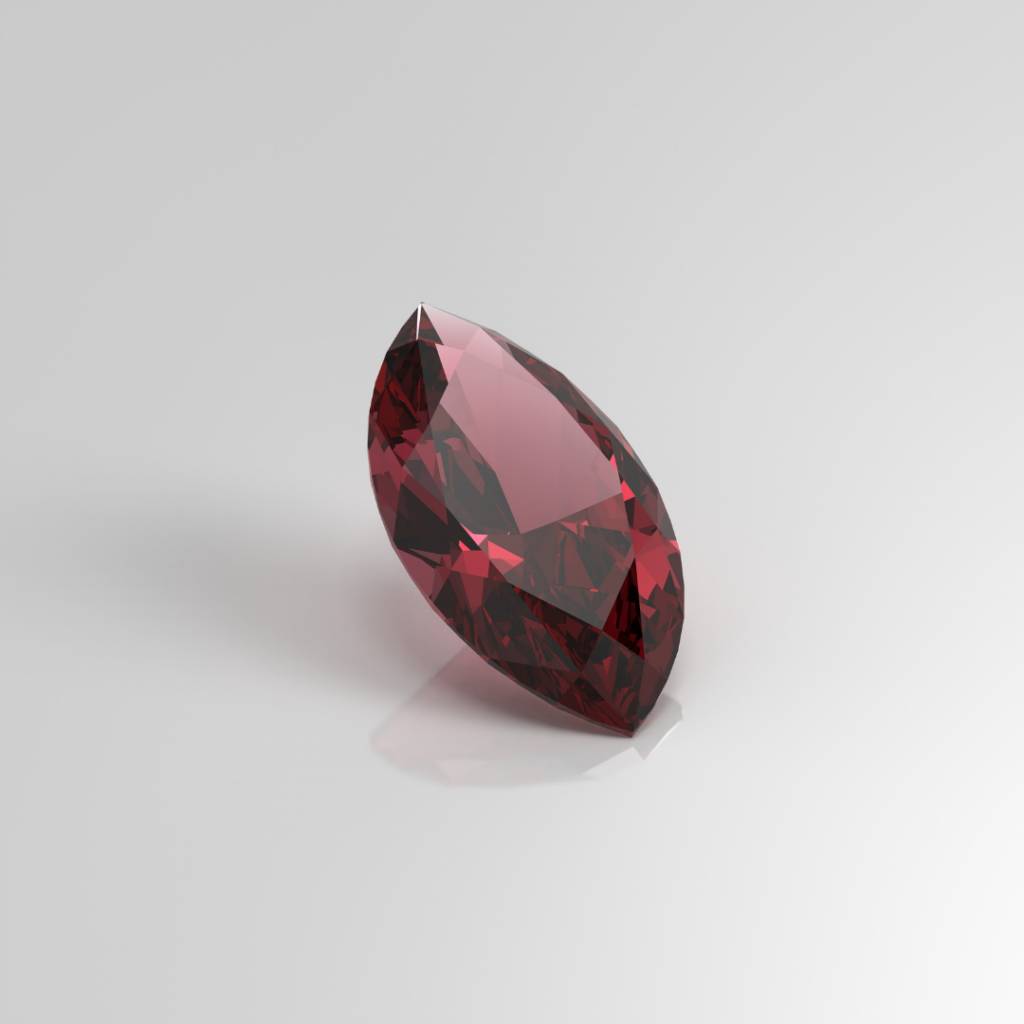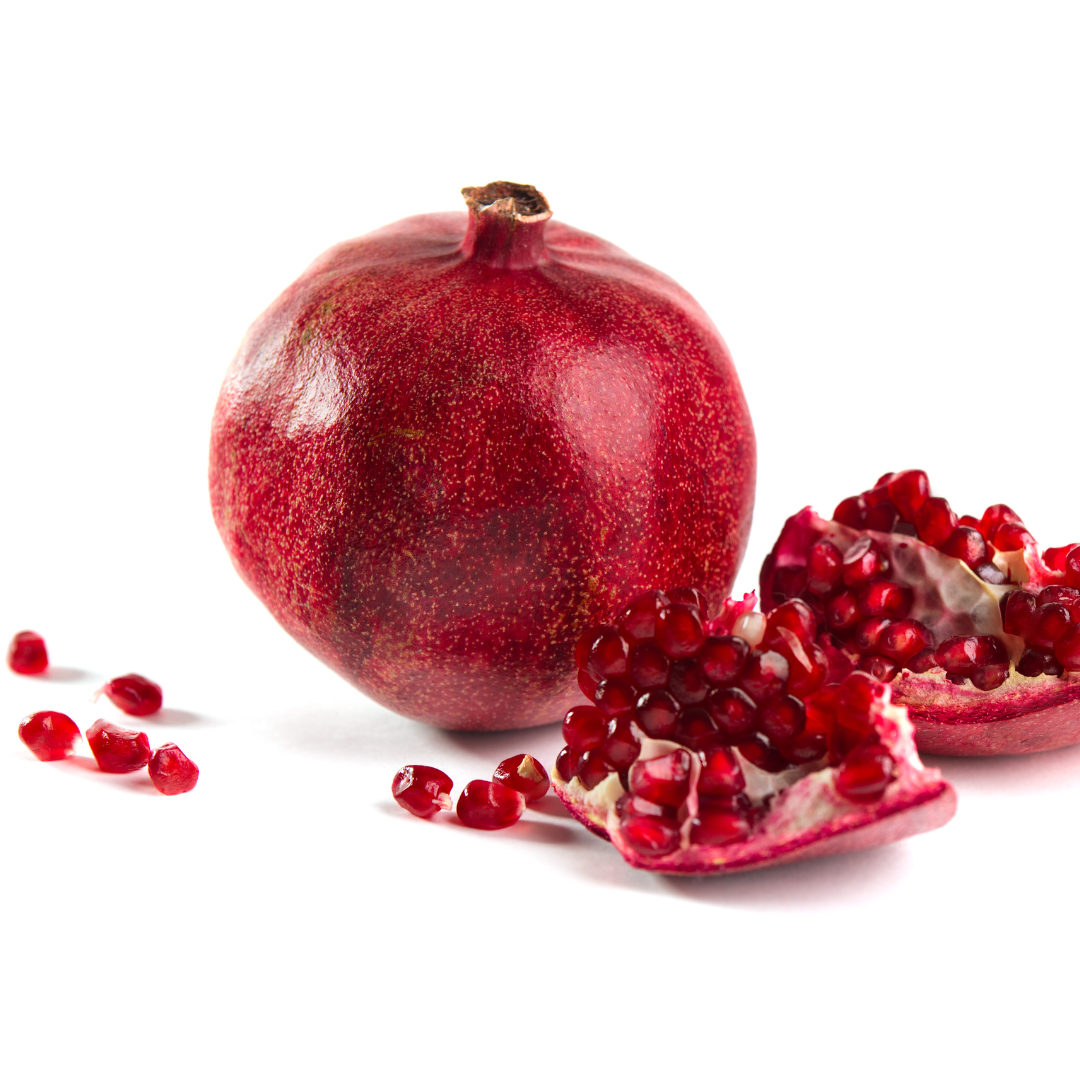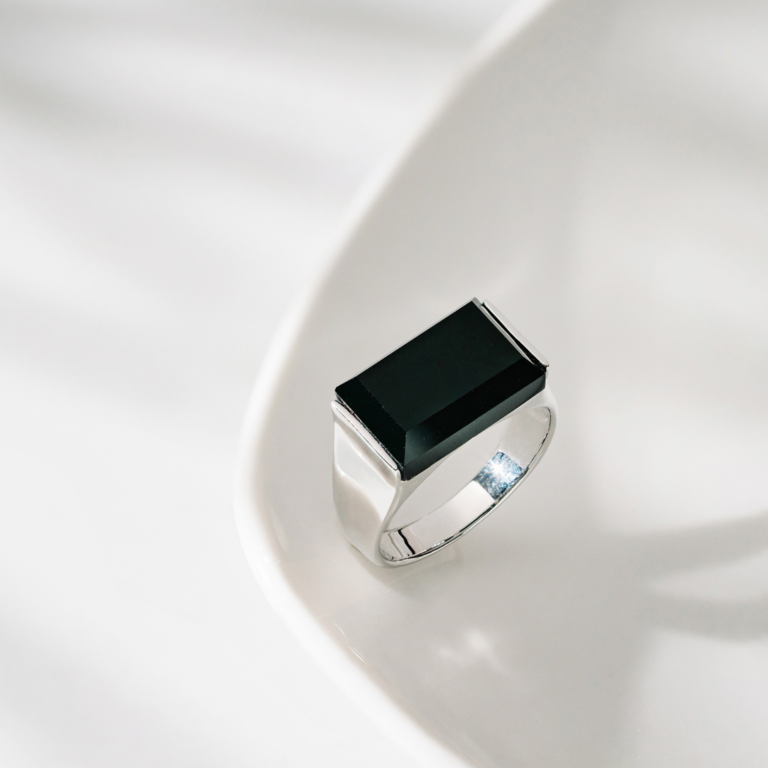January Birthstone
Garnet: Unveiling the Gemstone’s Significance and Applications

Garnet, a group of silicate minerals, has been a gemstone and abrasive material for thousands of years. Its name originates from the Latin word “granatus,” which means seed or grain, due to its resemblance to pomegranate seeds. While known for their beauty and elegance, garnets are highly regarded for their versatility, as they are found in various colours, each with distinct properties and applications.
The most common colour of garnet is red, but this mineral can be found in various shades of green, yellow, orange, and even an occasional blue. The colour variations are attributed to the presence of different elements within the mineral composition. For instance, almandine garnets are richer in iron, resulting in a deep red hue, while tsavorite garnets are rich in chromium and vanadium, producing an intense green colour.
Garnet has a long history of being used not only for jewelry but also for varied applications such as abrasive materials, water filtration, and even electronics. The Mohs scale of mineral hardness rates garnets around 6.5 to 7.5, making it a durable choice for different applications. The diversity of its uses and its fascinating history make Garnet a truly unique and captivating mineral group.
Garnet Classification
Species and Varieties
Garnet is a group of minerals rather than a single mineral species. There are six primary species of garnet which exhibit distinct chemical compositions and properties. These species are:
- Almandine – iron-aluminium garnet (Fe3Al2(SiO4)3)
- Pyrope – magnesium-aluminium garnet (Mg3Al2(SiO4)3)
- Spessartine – manganese-aluminium garnet (Mn3Al2(SiO4)3)
- Grossular – calcium-aluminium garnet (Ca3Al2(SiO4)3)
- Andradite – calcium-iron garnet (Ca3Fe2(SiO4)3)
- Uvarovite – calcium-chromium garnet (Ca3Cr2(SiO4)3)
Sub-varieties and intermediate members can be formed by the mixing of these species due to similar crystal structures. Some notable examples include Rhodolite (a mixture of almandine and pyrope) and Mali Garnet (a hybrid of grossular and andradite).
Colour Range
The distinct chemical compositions of garnet species lead to a wide range of colours. The most common colours include red, brown, green, orange, yellow, and black. Here is a brief overview of colour distribution among the main garnet species:
| Species | Common Colors |
|---|---|
| Almandine | Deep red, brown |
| Pyrope | Red, purplish-red |
| Spessartine | Orange, brownish-red |
| Grossular | Green, yellow, orange, colourless |
| Andradite | Green, yellow, brown, black |
| Uvarovite | Green (emerald-like) |
While these are the prevalent colours, variations and intermediate hues can occur when species mix, creating a diverse and intriguing palette.
Physical Properties
Chemical Composition
Garnet is a silicate mineral group consisting of several species, each with a distinct chemical composition. The general formula for garnets is X3Y2(SiO4)3, where X and Y represent different cations. Commonly, the X site is occupied by calcium (Ca), magnesium (Mg), iron (Fe), or manganese (Mn), while the Y site is filled by aluminum (Al), chromium (Cr), iron (Fe), titanium (Ti), zirconium (Zr), or vanadium (V). The six main species of garnets based on their chemical composition are:
- Almandine: Fe3Al2(SiO4)3
- Pyrope: Mg3Al2(SiO4)3
- Spessartine: Mn3Al2(SiO4)3
- Grossular: Ca3Al2(SiO4)3
- Andradite: Ca3Fe2(SiO4)3
- Uvarovite: Ca3Cr2(SiO4)3
Garnets often form in solid solution series, resulting in intermediate compositions and variations in colour.
Mohs Scale Hardness
The hardness of a garnet varies between the species; however, it generally falls between 6.5 to 7.5 on the Mohs scale. This property makes garnets suitable for industrial purposes and durable enough for most jewelry applications. Here’s a table summarizing the hardness values for various garnet species:
| Garnet Species | Hardness (Mohs) |
|---|---|
| Almandine | 7-7.5 |
| Pyrope | 7-7.5 |
| Spessartine | 7-7.5 |
| Grossular | 6.5-7 |
| Andradite | 7 |
| Uvarovite | 7-7.5 |
The combination of their chemical composition and hardness demonstrates the versatility of garnets in various applications, from jewelry to abrasives and even as filtration media in certain industrial processes.
Geological Formation
Metamorphic Processes
Garnet forms in metamorphic rocks under high temperature and pressure conditions. The mineral is created during the metamorphosis of sedimentary and igneous rocks. Common rock types where garnets are found are schist and gneiss. During metamorphic processes, mineral compositions and textures of these rocks undergo changes, leading to garnet formation.
The metamorphic grade, an indicator of pressure and temperature, largely influences the type of garnet formed. There are six common types of garnet:
- Almandine
- Pyrope
- Spessartine
- Grossular
- Andradite
- Uvarovite
Each type has its mineral compositions, which vary depending on the rock’s formation conditions.
Igneous Context
Garnets can also form in igneous rocks and are found in various settings. Some garnets may crystallize from magma or lava during the solidification process. For instance, pyrope garnets are commonly found in peridotites and pyroxenites, where they originate from the Earth’s mantle. Additionally, garnets are found in some pegmatite and eclogite formations.
| Rock Type | Garnet Type | Description |
|---|---|---|
| Peridotite | Pyrope | Formed in mantle-derived rocks at high pressure and temperature |
| Pyroxenite | Pyrope | Associated with mantle-derived rock formation |
| Pegmatite | Almandine, Spessartine | Result from the crystallization of magma or lava |
| Eclogite | Omphacite, Pyrope | High-pressure, high-temperature metamorphic rocks |
The formation of garnet within these rocks highlights the complex geological processes that take place deep within the Earth’s crust and mantle.
Historical Significance
Ancient Uses
Garnet has been a symbol of power and protection for thousands of years, dating back to the Bronze Age. Ancient Egyptians highly valued this gemstone, often incorporating it into their jewelry and talismans. Garnet beads have been found in 3000-year-old Egyptian tombs, proving their long-lasting admiration for the stone.
In ancient Rome, garnets were used for various purposes, including as seals to stamp official documents, ensuring authenticity. Additionally, garnets were thought to enhance strength and health, making them popular among warriors and gladiators.
Cultural Beliefs
Garnet gemstones hold diverse cultural beliefs across different civilizations. Here is a list of some of the well-known cultural associations of garnet:
- Hinduism: Garnet symbolizes success, prosperity, and purity. It is believed to bestow good fortune and protect the wearer from evil spirits.
- Christianity: The gemstone represents faith, devotion, and truth. Medieval Christians frequently used garnets to adorn religious artifacts and ornaments.
- Native American: Some Native American tribes believe garnet possesses healing powers and use it in traditional medicine to treat illnesses and injuries.
In conclusion, garnet has a rich historical significance spanning thousands of years and multiple cultures. The gemstone’s beauty and unique properties have continued its popularity throughout history.
Contemporary Applications
Gemstone Market
Garnet, a popular and diverse group of minerals, has been highly valued for centuries. Their rich colours and durability make them desirable for various jewelry applications. In today’s gemstone market, garnets are available in several types, including:
- Pyrope: Offers a deep red hue
- Almandine: Ranges from red to violet-red
- Spessartine: Exhibits bright orange to reddish-orange
- Grossular: Comes in an array of colours, including green, yellow, and pink
- Andradite: Available in green, yellow, or black
- Uvarovite: Distinguished by its green drusy crystals
Because of their diversity, garnet gemstones are often used in rings, necklaces, bracelets, and earrings. They are also popular in vintage and antique designs due to their classic appeal.
Industrial Uses
Apart from the gemstone market, garnets have a range of industrial uses. Here are some noteworthy applications:
- Abrasive: Coarse garnet grains are used for cutting, sandblasting, and water jet cutting thanks to their hardness and resistance to wear.
- Filtration: Some water filtration systems incorporate garnet as a filtration media. The irregular shape and high specific gravity help to remove contaminants effectively.
- Antiskid Surface: Crushed garnet can be added to surfaces such as airplane runways, highways, and pedestrian areas to improve traction and reduce the risk of skidding.
- High-Pressure Research: Natural garnets, specifically diamonds, have been found to be used in high-pressure experiments due to their stability and ability to withstand extreme pressures.
While garnets are known for their ornamental value, their industrial applications showcase their versatility and integral role in various industries.







